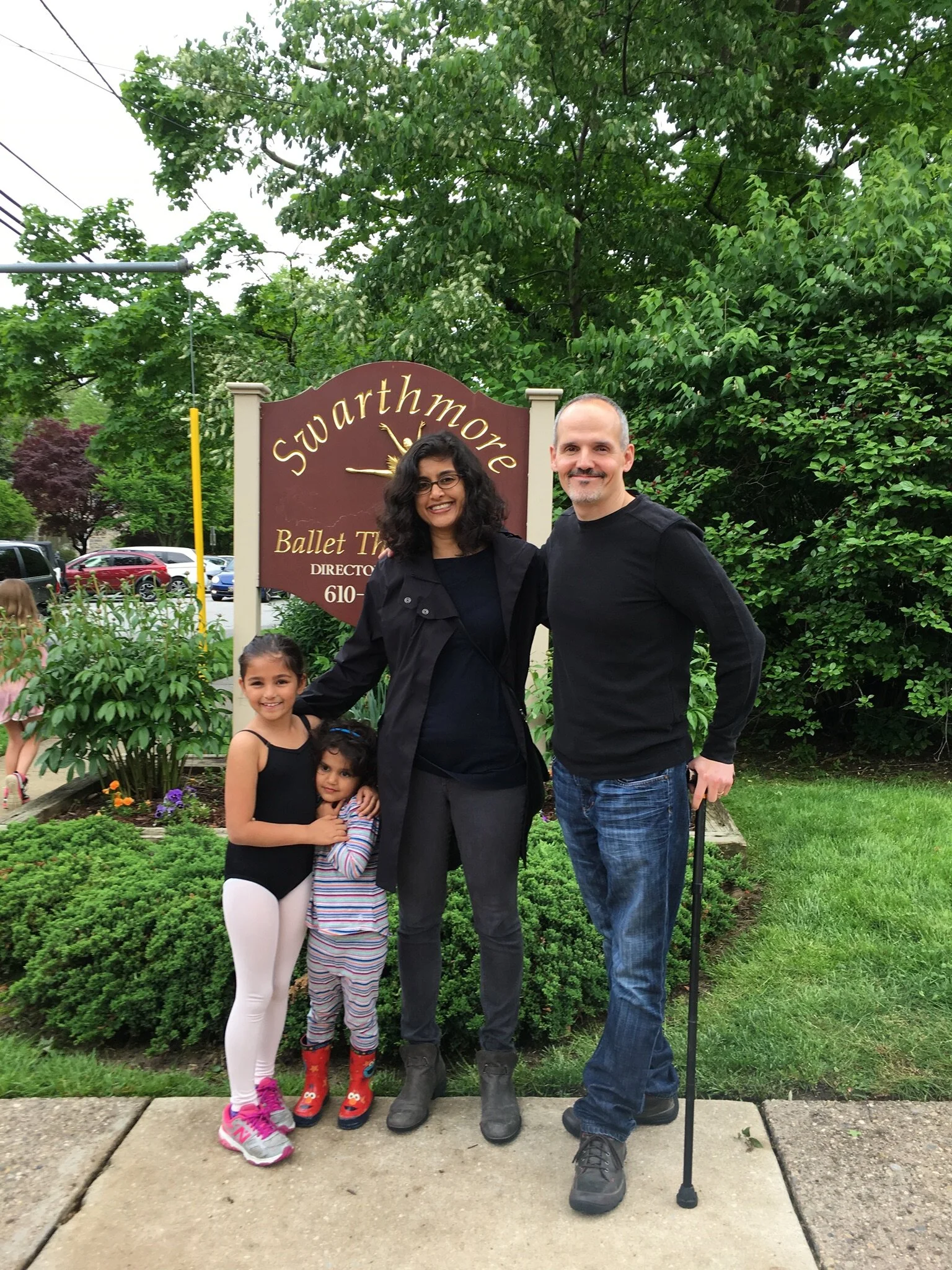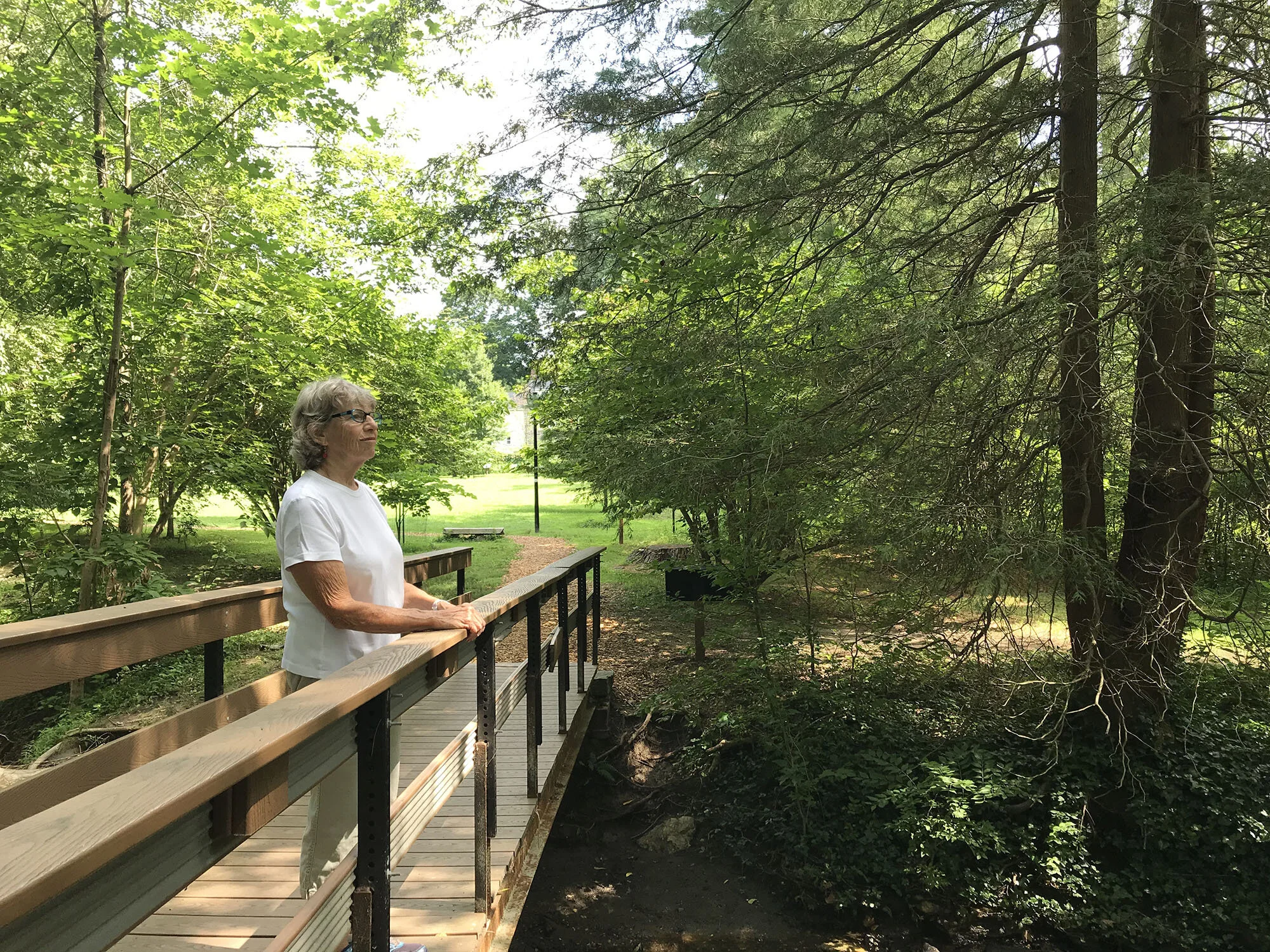Embrace Accessibility in Swarthmore
Samina Iqbal with her husband, Tony Denninger, and their children, Joya and Ayla Denninger. Photo: Yasmine Iqbal
On Sunday, July 26, my family celebrated the 30th anniversary of the signing of the Americans with Disabilities Act (ADA) by watching “Crip Camp,” a documentary about a New York summer camp that helped turn disabled kids into activists, and about what those kids managed to accomplish when they became adults.
It was gut-wrenching to watch footage illustrating how the 1990 ADA civil rights legislation came to be. This was the first time I’d seen the unstoppable Judith Heumann lead the 28-day sit-in in 1977 at the San Francisco Office of the U.S. Department of Health, Education, and Welfare that led to the passage of Section 504 of the Rehabilitation Act of 1973, a precursor to the ADA.
My husband was diagnosed with MS in 2000, so 2020 also marks my 20th year as part of a disabled couple. My family is indebted to those heroes.
My husband has used a wheelchair since 2006. Despite this life-changing challenge, we are able to live our lives here in Swarthmore, where we are grateful to the schools, businesses, and libraries to which we have access. We are grateful, as well, to our neighbors and friends who go out of their way to include us in gatherings at their homes. We are able to work, shop for food, access healthcare, participate in our children’s education, visit libraries and museums, eat at restaurants, see live music, and travel.
However, we can do these things in only a subset of places. There are many places where we still cannot participate in places of public activity. Any trip to anywhere — be it a doctor’s office, a school, or a store — requires advance research to plan exactly what is possible and what is not. We scope out places with Google Maps Street View, and make phone calls in advance. When we arrive, we’re often at the mercy of busy people to let us into a building. Often, the information we’ve been given in advance turns out to be wrong, or the wheelchair lift has been made into a makeshift storage space and no one knows where the key is. When this happens, we usually just turn away, unable to make every day a civil rights battle.
When it comes to compliance with accessibility requirements, complacent inaction is the norm. So much of our building stock is “grandfathered in.” According to the ADA, removal of architectural barriers is required only when “readily achievable” or “easily accomplishable and able to be carried out without much difficulty or expense.” This language has resulted in civil rights legislation that, though it has been on the books for 30 years, is often – and easily – ignored.
Five years ago, I served on Swarthmore’s Aging-In-Place Task Force. In the Transportation and Mobility section of our final report’s recommendations, we urged Swarthmoreans to increase accessibility in the town center and throughout the borough. Today, the level of inaccessibility in Swarthmore’s places of public accommodation remains virtually unchanged. In the quarter-mile radius encompassing Swarthmore’s town center, approximately 56% of places are at least partially accessible to people with mobility disabilities, but 44% are not.
Why, in Swarthmore, is this most physical denial of civil rights perennially acceptable? Back in 2015 and 2016, when I initiated conversations about the lack of accessibility in Swarthmore, the answer I got was “Now is not the time.” And today, in this pandemic era, when our downtown businesses are struggling, the answer I anticipate getting with even more conversation-ending finality is that now is still not the time. How many times have we heard that said, in relation to every piece of civil rights legislation, of any kind, ever enacted? Now never seems to be the time to do what is inconvenient— and costly — for the benefit of a minority of people, even if they quietly endure discrimination.
But if, together, we think creatively — and show some collective will to make positive changes — there will be tangible beneficial returns for all stakeholders.
One incredibly positive change our town did make was to alter its plans for Swarthmore’s Central Park, which originally called for a staircase leading from the parking lot to the front entrance of Borough Hall. Through the power of public process, and the will to invest in design for all, a ramp was built instead. It has been a joy to see this ramp become a thoroughfare of inclusion, providing access to parents and their kids in strollers, as well as wheelchair users, and many more. It’s a feature, not a detraction, enhancing a great public space.
In their July 26 New York Times opinion piece, “We’re 20 Percent of America, and We’re Still Invisible,” Judith Heumann and John Wodatch state, “But laws can only do so much. To be fully realized, people themselves must do more than follow them by the letter. They must embrace their spirit.” Swarthmore, let’s embrace that spirit and make accessibility a reality in more of our public spaces. It’s been 30 years since the ADA was passed. That’s long enough, don’t you think?
Samina Iqbal is an architect who lives in Swarthmore.




